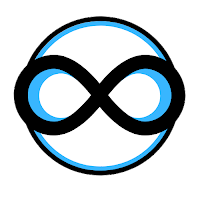In the previous article, I outlined what it takes to establish an effective roadmap to manage non-technical risks in the Oil and Gas industry. There were six key themes identified which were considered essential in ensuring robust Non-Technical Risk Management. This article will look at the first of these six themes, True Understanding of Stakeholder Needs. It will detail the building blocks, steps and processes involved in the roadmap to meet each objective.
 |
| A Nenets herder leads reindeer under a pipeline at the gas field in Siberia. Copyright National Geographic. |
In order to ensure that the plan you put in place works, it is important to define what success looks like. At this point, the objectives are to gain and maintain community support; to seek a competitive advantage; to have a true stakeholder value proposition in place, that was verified by them; to have streamlined regulatory processes in place. To support these four main objectives, there are key steps you need to take.
1. The First Rule is to Know your Community
The first rule is to know the local community, key stakeholders and influencers. It is key to establishing robust building blocks for success. All too often this essential principle is either not carried out correctly, or even worse, becomes a paper exercise based on theories.
To do it well, you need to start with robust and objective Stakeholder Influence Mapping, which is designed, tested and verified with the stakeholders. It must be conducted early on, well before there is any physical footprint and well before preparations such as regulatory permits or licenses are sought. Moving forward with development without a deep understanding of the political and social landscape is fatal and will guarantee project failure, or delay.
Here is how you do it.
Establish local presence with the right people early
Having representatives on the ground who identify the key people to be involved -- who they influence and who influences them -- is a basic prerequisite of mapping out the landscape. These representatives need to be local, well-respected, politically-neutral and have strong relationships and connections with the stakeholders at all levels.
The process of building the relationships and having direct communications with the communities and their leadership is essential to understand the facts about the country, its people and who to deal with.
Ground truthing and triangulation of facts
All too often the relationship building and gathering of stakeholder information are tainted -- or even incorrect and sometimes divisive -- as that information is either false or biased in some way. So, it is important to use multiple sources of data and ensure the validation of facts from alternate sources. Using genuine enquiry methodology and testing assumptions are key. Going ahead on incorrect assumptions can lead to serious adverse consequences for the project.
Internal controls and protocols for communications and engagements
Controlling the communication flow to ensure key stakeholders are correctly identified and engaged appropriately, together with the establishment of a protocol in communication is essential.
There must be one flow of communication, with no distractions and no misunderstanding on messaging. This will ensure that there is no overpromising and that commitments are kept to. A robust “customer relationship management system” with tracking of issues; complaints and records of dialogues is key to ensuring correct controls.
2. Community Support and Gaining a competitive advantage
Once you know your community, your key stakeholders, and the tracking system is established and working well, the ongoing effective management of stakeholder relations is a continuous marathon of time and resource commitment, which takes the consistent effort at all levels of the project.
From past experiences and histories of successful projects, the following elements are deemed to be crucial:
- Maintaining a connection to the community face to face, on the ground and at an almost constant level. This is never “ad-hoc” or on a “fly-in” basis, but a consistent presence
- Deliver on commitments and do as you say, this is why a robust communication protocol is so important, every commitment and promise must only be from those that have the authority and accountability to carry it out and it must be recorded, tracked and closed out.
- Address issues early and effectively - this is self-explanatory but needs a system in place as described before. It becomes so important to build up trust and understanding with the communities and other stakeholders.
- Personal drive and commitment to see things through- particularly from senior management, and those with the authority to make changes or get things done.
- Proactive and personal relationships - at all levels of the project.
- Authority and visibility of leadership - address the issues quickly and effectively. The most senior person on the project MUST have the authority to address issues and deliver on commitments without being vetoed by Head Office.
- Build trust early - There is a need to be open with Regulators and Community on dilemmas and impacts. Tell the whole story early and be as transparent as you can. Explain what the future will look like, good and bad. Communities will fear the worst and often sharing the reality will be less of an issue than first thought. Hiding potential issues will only deepen suspicion in the community and other stakeholders.
- Ability to genuinely enquire and understand - is an important personal attribute that everyone on the project must have.
- Leadership buy-in and supportive management - Investing the time and resources to resolve the issues and deliver on commitments
3. True stakeholder value proposition
Large companies often assume (to their peril) that they know “what’s best for stakeholders”, either through past experience on what has worked in other parts of the world or by not carrying out a thorough enough analysis and making assumptions.
Complying with the First Rule will ensure a deep understanding of the stakeholder needs, issues, aspirations and concerns. Only then there can be work done into the development of a value proposition by finding out what is meaningful and of value to the community. Genuine enquiry and learning from engagements and relationships will reinforce the understanding of what is required.
Fundamentally, initiatives must be aligned with community needs and not some “bolt-on” that has worked somewhere else in the world. To guarantee success there should be alignment with local, regional and national plans so that the development of any Social Investment programme is focussed on the key issues -- health, unemployment, social issues -- and create shared value. This needs to be tested and verified with stakeholders regularly, ideally through a formal community-based forum. Ideally, the project needs to get to a place where there is a solution-building with stakeholders to address dilemmas.
4. Streamlined regulatory processes
All too often projects are delayed due to the lack of progress in the regulatory processes. Often this is a result of a lack of alignment between the Project and the Regulator -- each has different priorities, that are at times in conflict with each other.
To overcome this, it has been found that having a personal connection to regulators is very important. Building the relationship to be as open as possible, where issues and long-term goals are shared, leads to sharing and solving the problems.
Sharing what the long-term future looks like, the issues and challenges that may bring, and finding solutions to address any hurdles to progress -- make the Regulator part of the team that solves the problems.
Co-creation of a regulatory framework, with boundary conditions, reporting parameters and measurements, can lead to a more efficient system and save time and money on both sides, without compromising safety or standards. Having several different channels with the agencies to build relationships with the Government means alignment is key. All interfaces must be coordinated through a focal point.
ABOUT THE AUTHOR
Phil Dyer. Recognized as someone who supports change, drives and changes behaviours, and creates a supportive environment, while encouraging risk-taking and supporting a reward culture. Phil had a key role in advising Directors on issues and stakeholder management and developed key relationships with senior management. Working at both local/national/regional and group level and managing diverse teams, both virtual and actual, he established good networking skills with functions and business at all levels in the organisation from Directors to an operational level.
The article was written specially for Think Tank AlterContacts.









